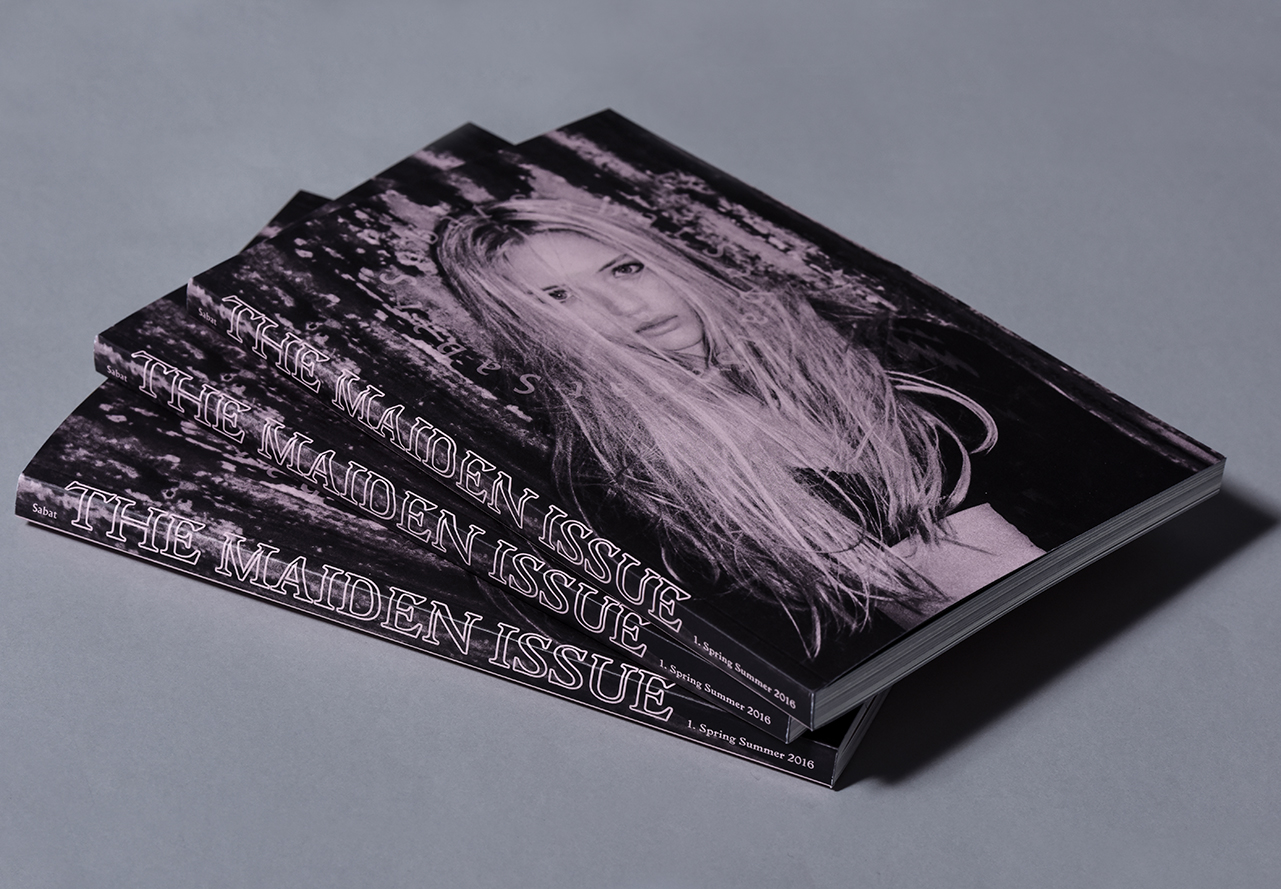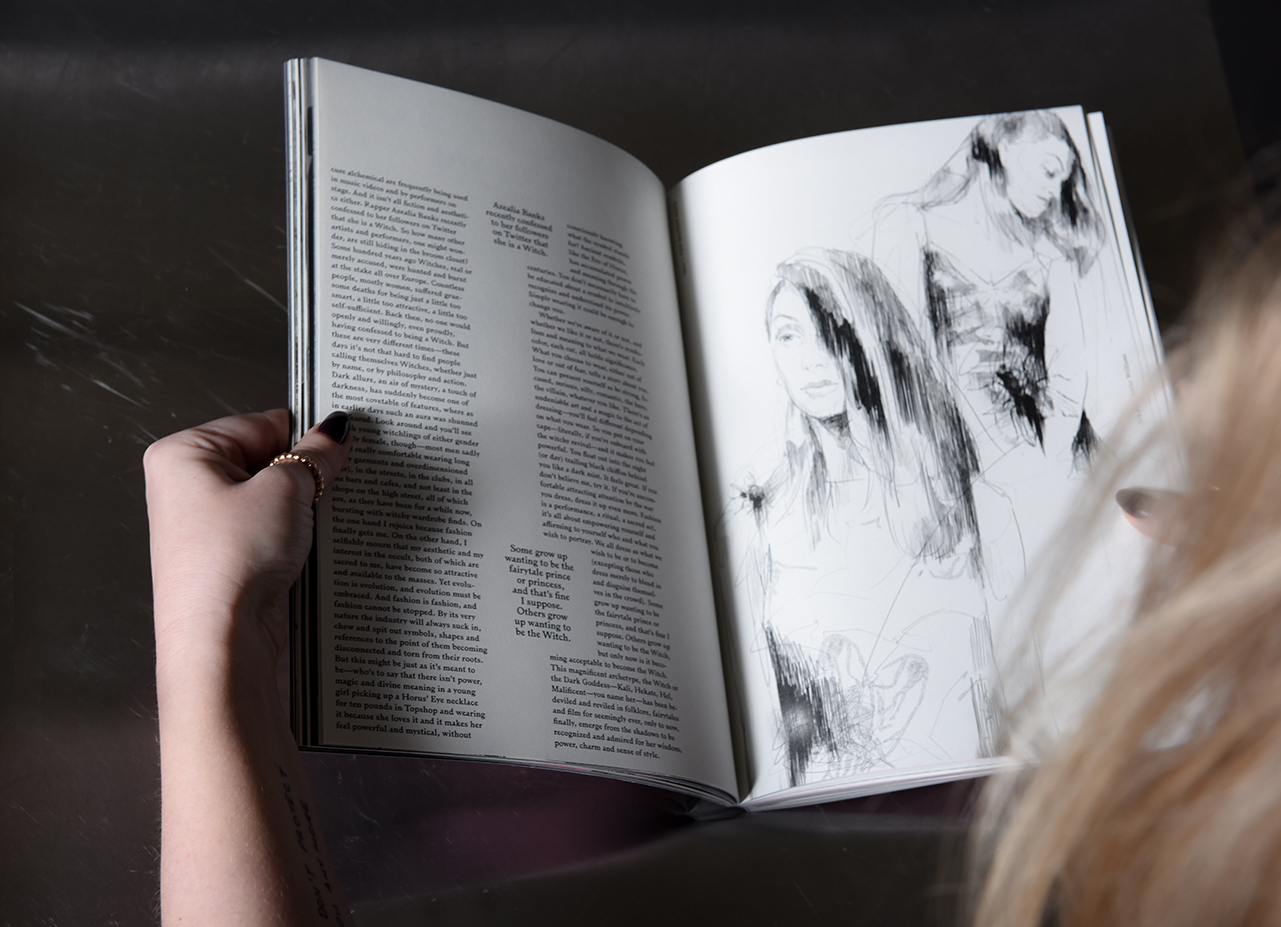Behind the scenes: Sabat magazine
Independent magazines are notoriously niche, but I still had to look twice when the new Sabat magazine landed on my desk – a magazine about witches?
Trawling the more occult corners of Instagram, founder and editor Elisabeth Krohn made it her mission to explore what it means to be a witch today. Intrigued, I met up with Elisabeth at the suitably witchy-sounding café The Life Goddess to learn more…

For someone encountering Sabat for the first time, how would you describe it?
It’s a magazine that explores witchcraft today, and encourages and guides its readers to find their powers within.
How did the idea for Sabat come along?
The 90s have been prevalent in pop culture in recent years, and teenage witches seemed like a very relevant part of that. The 90s was a great decade for teenage witches and narratives involving that type of sisterhood, like The Craft and Buffy.
Making Sabat has been something of an anthropological study. The movement is very present on Instagram so that was my portal into it. From there, coming into contact with people involved in the movement continuously opened new doors for me and revealed a myriad of different personalities and interpretations of witchcraft.

So you weren’t yourself part of the occult movement that you’re describing?
Not directly, but I think the teenage witchcraft conversion narrative is something a lot of people growing up can relate to – the feeling of ‘coming home’ and finding a group you belong to. You could see it as a sort of spirituality or religion that’s been latent within you and that finally finds its place.
How would you describe the subculture you’re aiming at with the magazine?
Sabat is not aimed at only one subculture. What we want is to open young girls’ eyes to a certain way of looking at womanhood and femininity – celebrating all positive as well as negative aspects of being a woman. Personally I’m very intrigued by a darker, rawer side of femininity, and with Sabat I wanted to explore that.

Do you feel like that darker side of femininity has been marginalised?
Yes, definitely – we’re all socialised into the belief that some parts of ourselves should be hidden away. But it think it’s really important to reconnect with those sides and not be ashamed. I want our readers to feel empowered and to appreciate their feminine sides.
Reading Sabat it seems like people have very different ideas about what it means to be a witch. Some are into crystals and tarot cards, while for others it seems to be grounded in seeing yourself as part of the earth somehow… This feels a bit awkward to ask, but are any of them ‘real’ witches? Actual supernatural witches?
Ha, I was wondering the exact same thing when I got into this. A lot of the personalities featured in this issue use crystals or tarot cards as part of meditation or a self-development practice. I don’t think I’ve met anyone who casts spells and stuff. Or at least they haven’t told me about it if they do – I got the feeling it’s a bit taboo.
The witchcraft movement featured in Sabat is more white witch-oriented, focused on light, self-development and positivity, but all the while acknowledging your darker sides – the shadow of self.

Your background is in fashion – what’s the role of fashion in Sabat?
Starting out I had a lot of prejudices about people involved in paganism; that they all wore celtic silver crosses and long, black gowns – that typical aesthetic that’s often used in the representation of the occult. But I quickly realised that there are a lot of different aesthetic expressions involved.
I want Sabat to be inspiring to all types of girls, even if they have no experience with goth or wicca. I didn’t want the fashion to be too ‘witchy’, so I’ve avoided the brands that specialise in that type of apparel. I’d rather show people that you can be a witch in brands like Céline and Acne as well.

Who’s the team behind Sabat?
I started it by myself and I do most of the writing. But it’s been really important to me that I preserve the voices of the people I interview; there are so many layers making up this culture and if Sabat only featured my voice it would make a very limited representation.
I came across our art director Cleber Rafael de Campos’ work on Behance and really liked it so I emailed him. Funnily enough he replied back telling me he’s really into Brazilian esoteric tradition himself. He loved the idea for the magazine and was happy to jump onboard. Talk about chance encounter, ha!

You’re Norwegian – what’s the witchcraft scene like in the Nordic countries?
I actually didn’t know much about this before I moved to London, but there’s a rather big scene in Sweden and Norway – lots of black metal girls who’re into witchcraft and paganism. Making Sabat I’ve been really intrigued by how the aesthetics and approaches differ from culture to culture. For example in LA the movement had more of a queer feminist edge to it and witchcraft seemed to be a poster movement for another type of liberation.

In the magazine you ask all your contributors what their definition of a witch is. After submerging yourself in this movement, what’s your definition?
Mine is pretty much in line with the one Segovia Amil presents in the magazine; that all women have the potential to be witches – it’s a force that you can choose to tap into, or to ignore. It’s about respecting and acknowledging one’s intuition and dark sides. When you can acknowledge that it’s there you can use it, but if you ignore it, it could hurt you – subconscious oppression can do a lot of harm. Ultimately, it’s about not being afraid of one’s darker sides.
–
Have the world’s best magazines delivered to your door – sign up to Stack and we’ll do the rest







